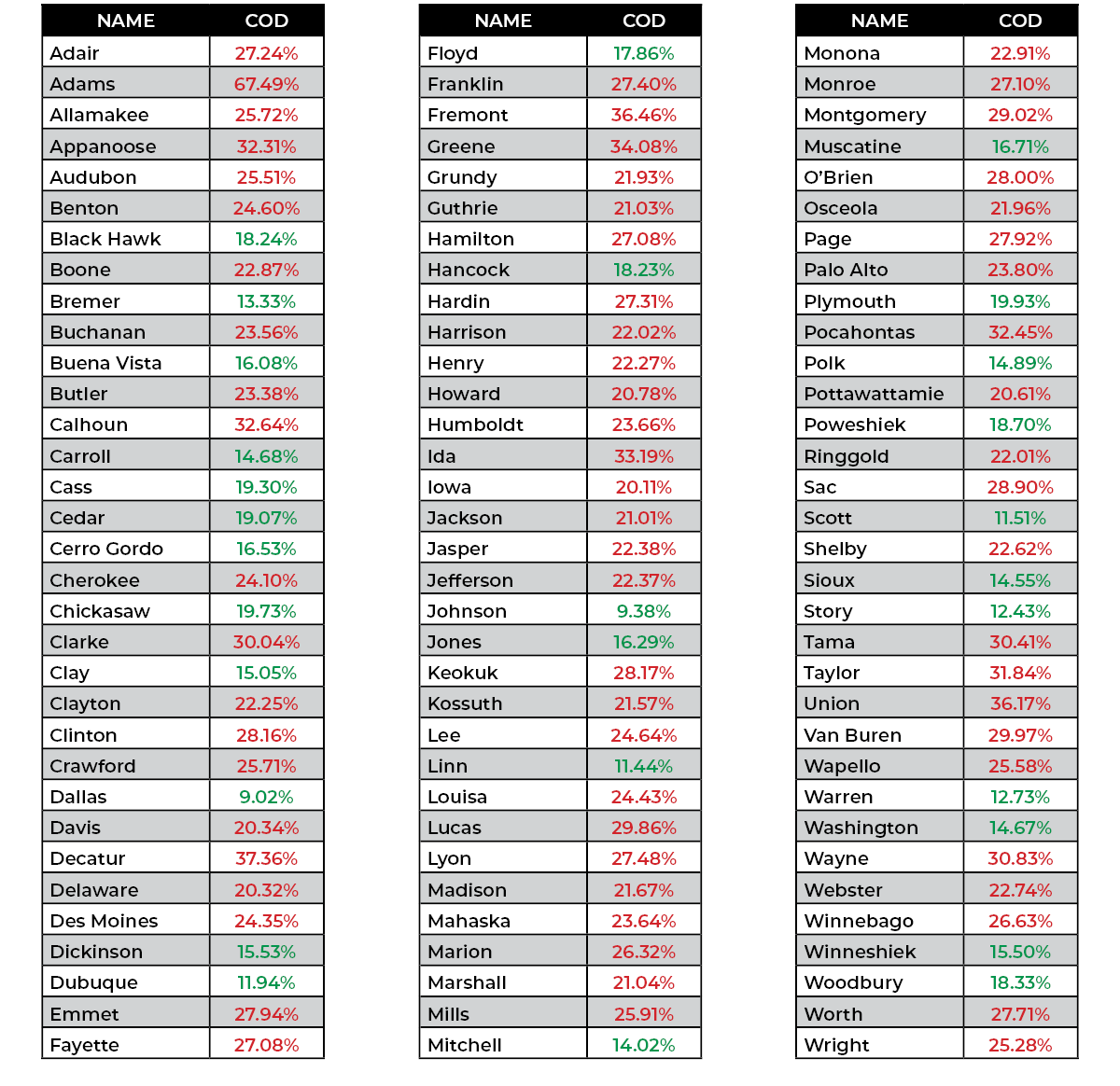All properties should be assessed equally using the same standards to ensure Iowans are not paying more than their fair share in property taxes.
BACKGROUND
Iowa has six different classifications of real property used for property tax purposes: agricultural, residential, commercial, industrial, public utility, and railroad. State law requires property subject to taxation to be assessed at 100% of its fair market value, with an exception for agricultural land, which is assessed using a five-year average productivity calculation.
The most-important concept for property taxation is that all property should be valued/assessed for tax purposes on a uniform basis so that the actual property tax burden is distributed fairly among individual property owners. One widely used and accepted method to determine uniformity or fairness of assessments is to compare the assessed value of an individual property to its sale price. For example, a property assessed at $12,000 that sold for $26,000 would have an assessment/sales ratio of 46% ($12,000 ÷ $26,000). Ideally, assessors want their sales ratio as close to 100% as possible, which means the assessment matches the probable sales price or current market value of the property. Auditors in Iowa maintain and remit sales and assessment data to the Department of Revenue where it is used as one of the factors for the biennial equalization of assessments.
PROBLEM
According to the most recent sales ratio study (2020), 70% of assessing jurisdictions maintain property assessments outside the established industry standards for assessment equity or fairness. This forces many taxpayers across the state to pay more than they otherwise would, while others pay less than they should. If an assessor maintains assessments inequitably, then property taxation will be unfair.
The Department of Revenue reviews assessment data from each jurisdiction to determine if the statutory requirement of 5% above or below actual value has been met. However, this is based on the median (middle-most value) of the sales ratio for each property class and jurisdiction, not the individual property values.
SOLUTION
The state should consider using a datapoint called the coefficient of dispersion (COD), which measures the variation of individual sales from the median/middle, to assess the uniformity or fairness of assessments within each jurisdiction. This datapoint was previously reported as part of a now discontinued sales study. The study should be reinstated for the purpose of disclosing the COD for each county and identify when it is outside the acceptable range. According to industry standards, regardless of urban or rural, all COD percentages should be below 20% if enough sales have occurred to produce valid numbers.
Additionally, Iowa assessors should all become certified through the Institute of Iowa Certified Assessors. While the higher level of assessment training required for this certification does not guarantee better results, many of the counties that have certified assessors maintain assessments more equitably.
How to interpret coefficient of dispersion:

Source: Iowa Department of Revenue 2020 Sales Ratio Study and Residential Deed transfer COD
This piece is part of an upcoming comprehensive Iowa property tax tool kit.
